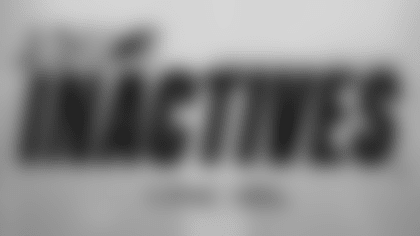He had been the rare linebacker in college who happened to have enough intelligence and athletic ability to switch to strong safety in the NFL and make the Pro Bowl within six seasons. But here he was, the AFC's incumbent Pro Bowl strong safety, lined up at cornerback across from Carl Pickens, a tall, fast, athletic wide receiver who was in the process of following up an 1,100-yard, 11-touchdown season with a 1,200-yard, 17-touchdown season. Oh, and the game where he found himself staring down Carl Pickens was a division game on the road, one his team absolutely had to have.
It was 1995, and the Pittsburgh Steelers found themselves at this point because their one starting cornerback – Deon Figures – had been shot in the knee during the offseason and still was trying to get back to what he had been, and their other starter – All-Pro Rod Woodson – had torn his ACL on the first third-down of the opener. Rookie Willie Williams was thrust into the starting lineup and was holding his own on one side, but a sub-par Figures plus Alvoid Mays plus Randy Fuller plus Chris Oldham wasn't working out on the opposite side.
"What I remember is feeling just really frustrated during the first seven games of that season," said Carnell Lake. "We had the makings of a great team, and then in the first game our premier cornerback goes down. How difficult is that going to be, and it turned out to be very difficult because our record at the time was 3-4. I thought it was going to turn out to be maybe my worst with the Steelers. Dick LeBeau called me early in the week of our bye, and he said, 'Carnell, I'd like to ask if you'd be willing to move to cornerback.' I was expecting him to say something along the lines of, 'Hey, we're going to have some different blitz schemes.'
"I was stunned. 'You're going to move me where? You want me to play what?' He said, 'Just think about it.'"
Carnell Lake being Carnell Lake, he reported to work early the next day, and LeBeau, then the Steelers secondary coach on a staff put together by Bill Cowher that included Dom Capers as the defensive coordinator and Marvin Lewis as linebackers coach, began the tutorial. As Lake said, "What better coach is there to teach you cornerback than Dick LeBeau?"
The first few games with Lake at cornerback had gone reasonably well, and the Steelers had climbed from 3-4 to 6-4. But then came a game against a Bengals team that had defeated the Steelers earlier that season at Three Rivers Stadium, and so it was that Lake found himself in Pickens' crosshairs.
"And Carl Pickens had his way with me," said Lake. "I was on the bench in the dumps, really, and Bill Cowher came up to me and said, 'You know, good cornerbacks have to have short memories.' That's all he said, and he walked away. That was the turning point for me."
Pickens finished with eight catches for 129 yards and a touchdown, but the Steelers won the game, and the team would go on to win the division and represent the AFC in Super Bowl XXX, and none of that happens without Carnell Lake stepping up and solidifying the team at cornerback. And that particular day in Cincinnati will be one of the things Carnell Lake calls upon in his new job as the Steelers secondary coach.
* * *
Lake was hired in early March to replace Ray Horton, who left to become the Arizona Cardinals' defensive coordinator, and if he is a neophyte to the coaching business he does have a considerable understanding of the basics of the defense he will be teaching.
As a second-round pick of the Steelers in 1989, Lake arrived here at the end of Chuck Noll's 23-season tenure. During his rookie season the team's defensive coordinator was Rod Rust, and when Rust left in 1990 to become the head coach of the New England Patriots, Noll hired Dave Brazil, a Rust disciple, to continue coordinating the same system. It was when Noll retired after the 1991 season that Dan Rooney hired Cowher.
"Rod Rust's defense was in part a match-zone defense," said Lake. "If a receiver or another offensive player came through your zone, you kind of played him man-to-man until he left your zone. If you didn't have anyone in your zone, you looked to find somebody close to your zone and match-up.
"So when Dom Capers and Dick LeBeau came to Pittsburgh (in 1992), the fire-zone concept was not that foreign to us. We kind of latched onto that rather easily because it made sense from what Rod Rust's general principles were. It didn't seem that difficult to us, and it was exciting to me because this was one of the first times that I really got to be active in the rush. And being active in the rush brought back memories for me of being a linebacker at UCLA. That seemed really natural to me."
One of the early innovations unveiled by the 1992 Steelers was an alignment designed to combat what was then the league's most potent offense – the run-and-shoot operated by the Houston Oilers. And since the Oilers were in the same AFC Central Division as the Steelers, Cowher understood that nothing could be accomplished until the Steelers defense could deal with Houston quarterback Warren Moon and his stable of receivers.
Starting in 1992, the Steelers' primary alignment against the Oilers, and in passing situations vs. other opponents, had Lake and Woodson lined up close to the line of scrimmage, just to the outside of the edge pass rushers – Greg Lloyd and, starting in 1993, Kevin Greene. There, they were in position to cover the slot receivers, or in the case of games against the Oilers, come in clean on Moon, who was in the shotgun with the one running back at his side facing the every-down question of: who is coming, and from where?
"It made our positions more exciting, Rod and myself, because we were inside and we got to be a part of the front seven, per se, and we also got to play man-to-man, we got to play zone, we played zone like man-to-man," said Lake. "For me personally, it made me a more versatile player. Instead of just being a cover-2 safety of the past – playing run-support against the run, things like that – I was transformed to a new kind of position in 1992. They asked me to play man-to-man, I was blitzing, I played it all, and it was exciting."
It was exciting for Lake but painful for Moon, and the run-and-shoot first faded from the spotlight as it came to be known as the chuck-and-duck, and then it disappeared from the NFL altogether.
Just think about it for a minute: In the early 1990s Lake was a versatile safety used against the run, as a pass rusher, as a cover guy, and was put in situations designed to allow him to make big plays. Sound like anybody else?
Troy Polamalu, maybe?
Carnell Lake was the prototype for what Troy Polamalu is today.
"When I look at the things they ask Troy to do – and obviously they haven't asked him to play cornerback – it's very similar to what I did," said Lake. "Troy, I think over time has developed a trust in the coaching staff to allow him to freelance more than I was able to, and he's making plays. I really agree with that. I never want to take away a player's instinctual ability."
And that's just one of the philosophies Lake will bring from his outstanding playing career as he begins his new career as the Steelers secondary coach.
"For the most part, it's about having confidence in your play," said Lake. "From my experience, a lot of players – whether they're cornerbacks or safeties – confidence affects every part of your game. It affects your technique, it affects your aggressiveness, it affects your judgment. So if I can instill confidence in my players and help them to believe in their skills, I think they're going to be better. And they're not bad now."






